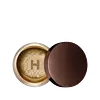Florasis Flawless Jade Breathable Setting Powder Versus Hourglass Cosmetics Veil Translucent Setting Powder
What's inside
What's inside
 Key Ingredients
Key Ingredients

 Benefits
Benefits

No benefits
 Concerns
Concerns

 Ingredients Side-by-side
Ingredients Side-by-side

Silica
AbrasivePolymethyl Methacrylate
Polymethylsilsesquioxane
Boron Nitride
AbsorbentDimethicone
EmollientCaprylic/Capric Triglyceride
MaskingHdi/Trimethylol Hexyllactone Crosspolymer
Methicone
EmollientEthylhexyl Palmitate
EmollientCaprylyl Glycol
EmollientEthylhexylglycerin
Skin ConditioningMacadamia Ternifolia Seed Oil
EmollientHydrogenated Lecithin
EmulsifyingTriethoxycaprylylsilane
Prunus Persica Flower Extract
MoisturisingArnebia Euchroma Root Extract
AntimicrobialNephrite Powder
AbrasiveSilk Powder
Skin ConditioningButylene Glycol
HumectantPearl Powder
Kaolin
AbrasiveTin Oxide
AbrasiveDimethicone/Vinyl Dimethicone Crosspolymer
Skin ConditioningDipropylene Glycol
HumectantPentylene Glycol
Skin ConditioningTocopherol
AntioxidantWater
Skin ConditioningGlycerin
HumectantRibes Nigrum Leaf Extract
PerfumingRubus Idaeus Leaf Extract
Skin ConditioningNymphaea Alba Flower Extract
Skin ConditioningHydroxyacetophenone
AntioxidantSorbic Acid
PreservativeCI 77742
Cosmetic ColorantCI 77891
Cosmetic ColorantSilica, Polymethyl Methacrylate, Polymethylsilsesquioxane, Boron Nitride, Dimethicone, Caprylic/Capric Triglyceride, Hdi/Trimethylol Hexyllactone Crosspolymer, Methicone, Ethylhexyl Palmitate, Caprylyl Glycol, Ethylhexylglycerin, Macadamia Ternifolia Seed Oil, Hydrogenated Lecithin, Triethoxycaprylylsilane, Prunus Persica Flower Extract, Arnebia Euchroma Root Extract, Nephrite Powder, Silk Powder, Butylene Glycol, Pearl Powder, Kaolin, Tin Oxide, Dimethicone/Vinyl Dimethicone Crosspolymer, Dipropylene Glycol, Pentylene Glycol, Tocopherol, Water, Glycerin, Ribes Nigrum Leaf Extract, Rubus Idaeus Leaf Extract, Nymphaea Alba Flower Extract, Hydroxyacetophenone, Sorbic Acid, CI 77742, CI 77891
Ingredients Explained
These ingredients are found in both products.
Ingredients higher up in an ingredient list are typically present in a larger amount.
Boron Nitride is compound consisting of boron and nitrogen. It is used to absorb oil and modify adherence/ slip in products.
This means it is often used in makeup products to help them last longer.
This ingredient is a powder used to improve texture, slip, and give products a silky texture.
Polymethylsilsesquioxane is a silicone used as a film forming agent.
When applied to the skin, this ingredient creates an invisible film on the surface. This film still allows oxygen to pass through, but prevents moisture from escaping. This can help condition and hydrate the skin. It also leaves a silky feel when applied.
Polymethylsilsesquioxane has not been shown to clog pores. It has been deemed safe to use up to 55%, but most cosmetics use much less.
If you have concerns about using this ingredient, we recommend speaking with a professional.
Learn more about PolymethylsilsesquioxaneSilica, also known as silicon dioxide, is a naturally occurring mineral. It is used as a fine, spherical, and porous powder in cosmetics.
Though it has exfoliant properties, the function of silica varies depending on the product.
The unique structure of silica enhances the spreadability and adds smoothness, making it a great texture enhancer.
It is also used as an active carrier, emulsifier, and mattifier due to its ability to absorb excess oil.
In some products, tiny microneedles called spicules are made from silica or hydrolyzed sponge. When you rub them in, they lightly polish away dead skin layers and enhance the penetration of active ingredients.
Learn more about SilicaSorbic Acid is a preservative. It is the most commonly used food preservative in the world.
Sorbic Acid is a natural antibiotic and highly effective at preventing the growth of fungus. It is less effective against bacteria.
Potassium Sorbate, another commonly-used preservative, is the potassium salt of Sorbic Acid.
Sorbic Acid may worsen eczema. We recommend speaking with a professional if you have any concerns.
Potassium sorbate and sorbic acid can be found in baked goods, cheeses, dried meats, dried fruit, ice cream, pickles, wine, yogurt, and more.
Learn more about Sorbic Acid